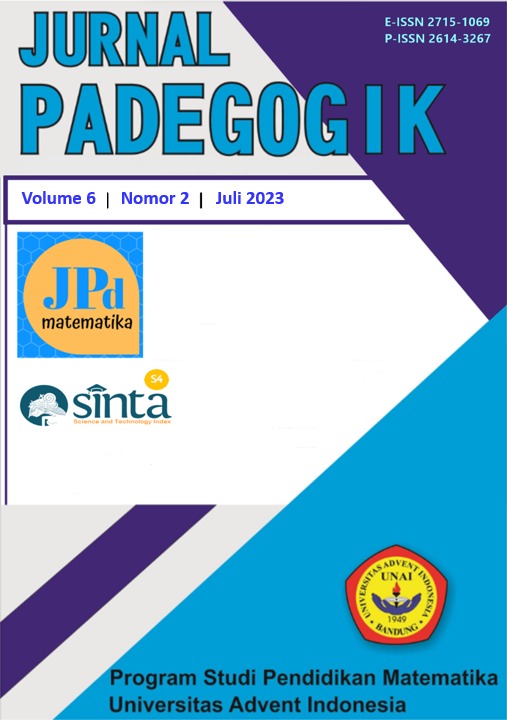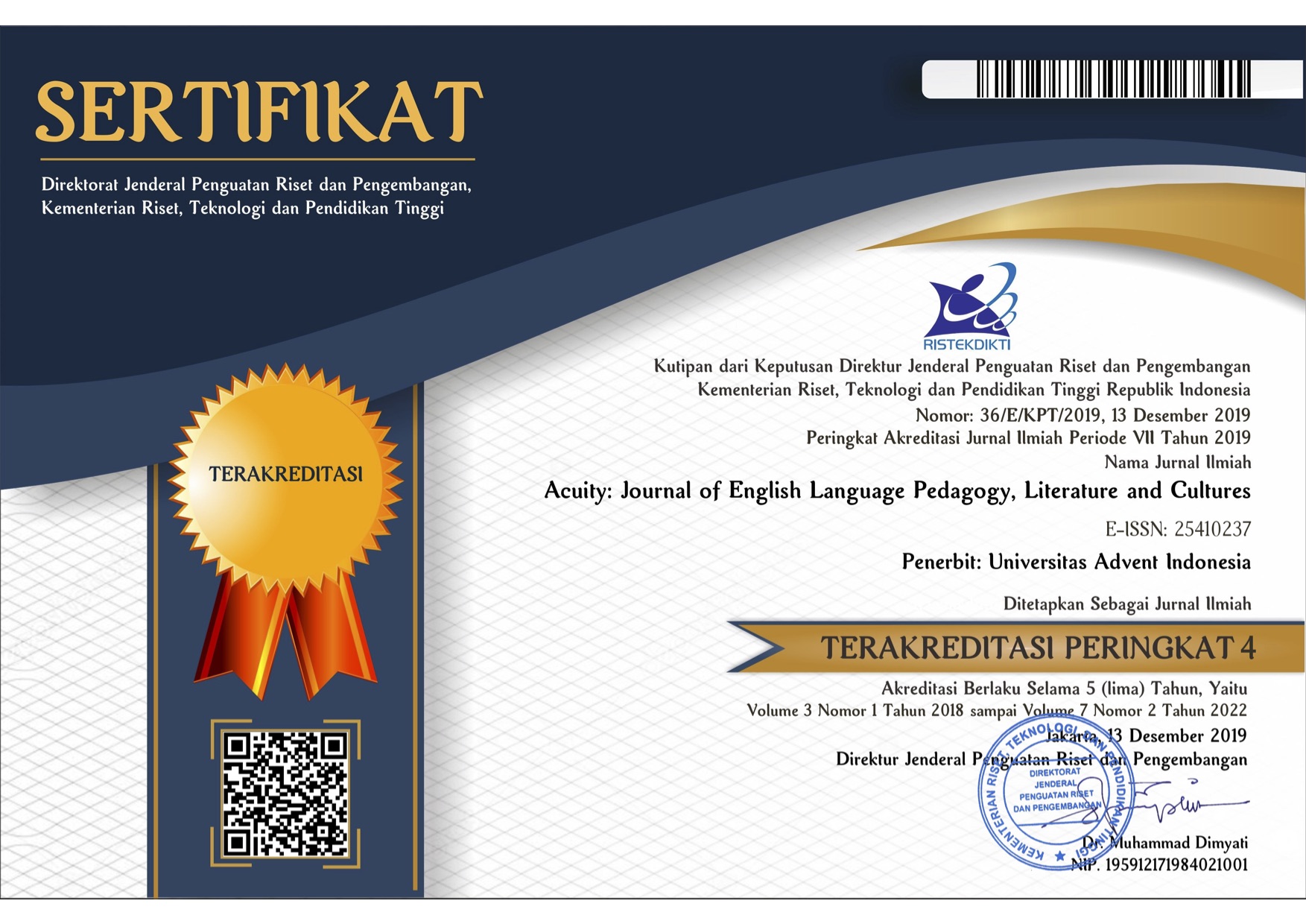The Effectiveness of ICT-Assisted in The Power of Two Learning to Increase Junior High School Students' Mathematical Understanding and Problem Solving Ability
Keywords:
Mathematical understanding ability, problem solving ability, the power of two learning, ICTAbstract
A good learning strategy can improve students' abilities. This study aims to determine the effect of ICT-assisted the power of two learning on improving students' mathematical understanding and problem solving abilities, to find out whether there is a correlation or relationship between students' understanding abilities and students' mathematical problem solving abilities, and to determine student responses to learning the power of two ICT-assisted. This study used a one group pretest-posttest design with a purposive sampling technique. This study used one class, namely 24 students from class VII SMP Adventist Parongpong in West Bandung. The instruments used in this study were tests describing students' mathematical understanding and problem solving abilities on the subject of triangles and student response questionnaires. The results of this study are: an increase in the ability to understand and solve mathematical problems of students who receive ICT-assisted the power of two learning is in the moderate category, after being given treatment the ability to understand and solve mathematical problems of students is better than before it is given, there is a strong correlation between understanding abilities and mathematical problem solving abilities, students' responses to the learning given are very satisfied and give positive responses.
Downloads
References
Bintaro, T. (2018). Penerapan Pembelajaran The Power Of Two Untuk Meningkatkan Minat Pada Mata Pelajaran Matematika. Jurnal Sains Social Dan Humaniora, 2(1), 145-157.
Febriyani, A., Hakim, A. R., & Nadun, N. (2022). Peran Disposisi Matematis terhadap Kemampuan Pemahaman Konsep Matematika. Plusminus: Jurnal Pendidikan Matematika, 2(1), 87-100.
Flooryana, S., & Susilowaty, N. (2022). Analysis Of Students’ Mathematical Problem-Solving Ability Based On Littauer Personality Types. Jurnal Padegogik, 5(1), 39-53.
Hake, R.R. (1999). Analyzing change/gain scores. [Online]. Tersedia: http://www.physics.indiana.edu/~sdi/Analyzingchange-Gain.pdf
Harsa, F. (2016). Integrasi ICT dalam pembelajaran matematika. Jurnal Paedagogi, 8(2), 158-162.
Lestari, & Yudhanegara, M. (2017). Penelitian Pendidikan Matematika. Bandung: PT Refika Adimata.
Muthia, dkk. (2022). Studi Perbandingan Prestasi Belajar Matematika Menggunakan Model Pembelajaran Discovery Learning dan The Power of Two. Jurnal Riset Pendidikan Matematika Jakarta, 4(2), 9-18.
Nurdiyana, R., Pujiastuti, H., & Anriani, N. (2022). Analisis Kemampuan Pemahaman Matematis Siswa SMP Ditinjau Dari Minat Belajar. Jurnal Cendekia : Jurnal Pendidikan Matematika, 6(3), 2735-2748.
Russefendi, H.E.T. (2006). Pengantar Kepada Membantu Guru Mengembangkan Kompetensinya dalam Pengajaran Matematika untuk Meningkatkan CBSA. Bandung: Tarsito
Susilowaty, N. (2019). Pengaruh Model Pembelajaran Core Dengan Strategi Konflik-Kognitif Terhadap Kemampuan Pemahaman Siswa Smp. Jurnal Padegogik, 2(2), 81 - 89.
UNESCO. (2007). The UNESCO ICT in Education Programme. United
Zaini. (2008). Strategi Pembelajaran Aktif. Yogyakarta: Insan Madani.

Downloads
Published
How to Cite
Issue
Section
License
Copyright (c) 2023 Jurnal Padegogik

This work is licensed under a Creative Commons Attribution-NonCommercial-ShareAlike 4.0 International License.
The submitting author warrants that
- The submission is original and that she/he is the author of the submission together with the named co-authors; to the extend the submission incorporates text passages, figures, data, or other material from the work of others, the submitting author has obtained any necessary permission.
- Articles in this journal are published under the Creative Commons Share-Alike Attribution Licence (CC-BY-SA What does this mean?). This is to get more legal certainty about what readers can do with published articles, and thus a wider dissemination and archiving, which in turn makes publishing with this journal more valuable for you, the authors.
- By submitting an article the author grants to this journal the non-exclusive right to publish it. The author retains the copyright and the publishing rights for his article without any restrictions.







